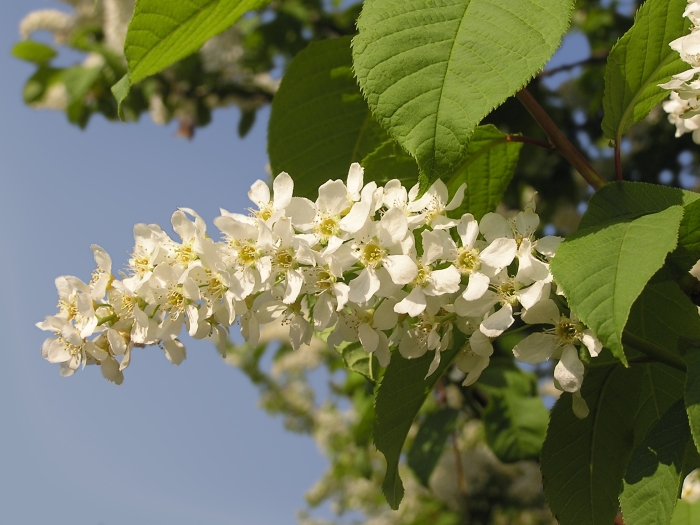European Bird Cherry
(Prunus padus)
European Bird Cherry (Prunus padus)
/
/

Andrey Butko
CC BY-SA 3.0










































































Estimated Native Range
Summary
European Bird Cherry is appreciated for its showy flowers and is often used in urban settings, parks, and gardens. It provides ornamental value with its springtime floral display and can serve as a habitat plant for wildlife. It prefers full sun to part shade and adapts to a range of soil types, provided they have medium drainage. While it is relatively easy to maintain, it can be susceptible to pests like aphids and leaf spot diseases. Prunus padus can become invasive outside its native range, so it is important to consult local guidelines before planting.CC BY-SA 4.0
Plant Description
- Plant Type: Tree
- Height: 20-40 feet
- Width: 20-40 feet
- Growth Rate: Moderate
- Flower Color: White
- Flowering Season: Spring
- Leaf Retention: Deciduous
Growth Requirements
- Sun: Full Sun, Part Shade
- Water: Medium
- Drainage: Medium
Common Uses
Bee Garden, Bird Garden, Butterfly Garden, Edible*Disclaimer: Easyscape's listed plant edibility is for informational use. Always verify the safety and proper identification of any plant before consumption., Fire Resistant, Fragrant, Hedges, Rabbit Resistant, Showy Flowers, Street Planting
Natural Habitat
Mixed forests, stream banks, and forest edges
Other Names
Common Names: Bird Cherry, Almindelig Hæg, Traubenkirsche, Gewöhnliche Traubenkirsche, Trauben-Kirsche, Tuomi, Merisier À Grappes, Cerisier À Grappes, Pado, Hegg
Scientific Names: , Prunus padus, Padus avium, Cerasus padus, Prunus padus var. borealis, Prunus padus var. rufoferruginea, Padus avium subsp. petraea, Rubus petraeus, Padus asiatica var. subglabra, Padus avium var. aucubifolia
GBIF Accepted Name: Prunus padus L.